|
Chemical
Name
|
Source |
Molecular
Structure
|
Mechanism
of Action
|
References
and Clinical Trials
|
|
Vitamin
D3
|
requires
supplement or natural sun |
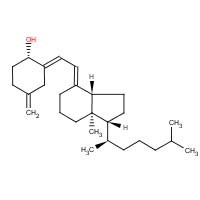 |
Inhibition
of the prostaglandin pathway for Prostate Cancer
|
Higher
vitamin D intake needed to reduce cancer risk
Study
links vitamin D to lung cancer survival
Ongoing
Clinical Trial --Vitamin
D and Soy Supplements in Treating Patients With Recurrent
Prostate Cancer
Ongoing
Clinical Trial -- Vitamin
D in Treating Patients With Prostate Cancer -- completion
date 2011
|
| Nicotinamide Riboside-- RG/ Niagen |
Nicotinamide riboside (NR) is a pyridine-nucleoside form of vitamin B3 that functions as a precursor to nicotinamide adenine dinucleotide or NAD+ |
 |
Increases the NAD+ coenzyme for enhanced mitochondrial function
Possible Anti-Aging Effect of Mitochondria |
Publicly traded company Chromadex acquired intellectual property on uses and synthesis of NR Chloride from Dartmouth College, Cornell University and Washington University and began distributing NR as NIAGEN™ in 2013
Reference: Beyond Resveratrol --The Anti-Aging NAD Fad-- Scientific American |
|
Epigallocatechin
gallate (EGCG),
|
ester
of epigallocatechin and gallic acid, and is a type of
catechin.
|
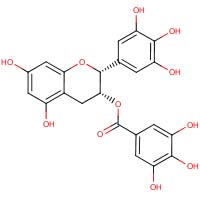 |
Bind
and inhibit the anti-apoptotic protein Bcl-xl
found
to be a strong topoisomerase inhibitor,
|
CATECHINS
-- GREEN TEA EXTRACTS
Epigallocatechin
Gallate Suppresses Lung Cancer Cell Growth through Ras�GTPase-Activating
Protein SH3 Domain-Binding Protein 1
Synergistic
Cell Death by EGCG and Ibuprofen in DU-145 Prostate Cancer
Cell Line
In-vitro
effects of polyphenols from cocoa and beta-sitosterol
on the growth of human prostate cancer and normal cells
Cancer
Prevention by Tea Polyphenols Is Linked to Their Direct
Inhibition of Antiapoptotic Bcl-2-Family Proteins
Complementary
Oncology-- Pancreatic Cancer Studies
Ongoing
Clinical Trial
Green
Tea Extract and Prostate Cancer Trial PII
Defined
Green Tea Catechins in Treating Patients With Prostate
Cancer Undergoing Surgery to Remove the Prostate
Oral
Green Tea Extract and Milk Thistle Extract to Colorectal
Cancer Patients Undergoing Resection
Green
Tea and Reduction of Breast Cancer Risk
Herbal
Therapy for Treatment of Recurrent Prostate Cancer
Green
Tea and Reduction of Breast Cancer Risk
Ongoing
Clinical Trial --Effects
of Pomegranate Juice or Extract on Rising PSA Levels in
Men Following Primary Therapy for Prostate Cancer
Small
daily doses of flavonoid- rich chocolate improve blood
vessel function, study suggests
|
| epicatechin
gallate (ECG), |
a
flavan-3-ol
--green
tea
|
 |
growth
suppression and anti-inflammatory activities See: Complementary
Oncology |
| Epigallocatechin
(EGC) |
a
flavan-3-ol
green
tea, bananas, pomegranate
|
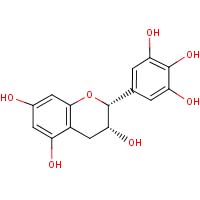 |
growth
suppression and anti-inflammatory activities
See:
Complementary
Oncology
|
| Epicatechin |
flavan-3-ols
EC--cacao
beans
|
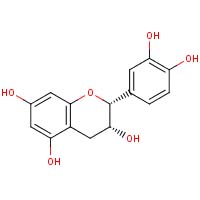 |
|
| IP-6
(inositol hexaphosphate) |
Rice
bran, beans, peanuts, corn, barley, sesame |
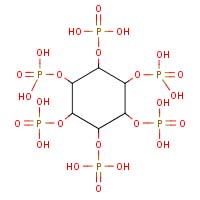
|
inhibits
PI 3-kinases or PI3Ks; iron-chelating molecule; inhibition
of platelet aggregation; antioxidant, |
Chemopreventive
efficacy of inositol hexaphosphate against prostate tumor
growth and progression in TRAMP mice.
Ongoing
Clinical Trial --Value
of Oral Phytate (InsP6) in the Prevention of Progression
of the Cardiovascular Calcifications (CALCIFICA)
|
| Quercetin |
flavonol
--
capers,
green tea, red wine, red onions
|
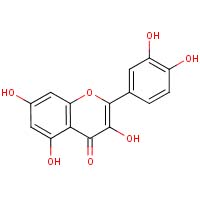 |
Quercetin
is believed to have anti-inflammatory and anti-allergy properties.
The proposed mechanism of action is via inhibition of lipoxygenase
and cyclooxygenase resulting in reduced production of inflammatory
mediators (e.g., leukotrienes and histamine). Quercetin
appears to inhibit cyclooxygenase to a greater degree than
lipoxygenase. |
Multitargeted
cancer prevention by quercetin.
The
dietary bioflavonoid, quercetin, selectively induces apoptosis
of prostate cancer cells by down-regulating the expression
of heat shock protein 90
Role
of Bax in quercetin-induced apoptosis in human prostate
cancer cells.
Ongoing
Clinical Trial - Clinical
trials with Quercetin
|
| Myricetin
|
flavonol
-- grapes, berries, walnuts, red wine |
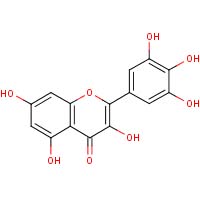 |
The
molecular pathway of apoptosis of human hepatocellular carcinoma
cell lines induced by myricetin might deal with the mitochondria-mediated
pathway. |
Studies
on mechanism of myricetin-induced apoptosis in human hepatocellular
carcinoma HepG-2 cells |
| Kaempferol |
flavonol
--
tea,
broccoli, brussel sprouts, apples
Ginkgo
biloba
|
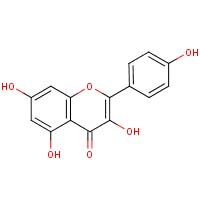 |
|
Kaempferol
and quercetin stimulate granulocyte-macrophage colony-stimulating
factor secretion in human prostate cancer cells.
Synergistic
Antiproliferative Action of the Flavonols Quercetin and
Kaempferol in Cultured Human Cancer Cell Lines
Kaempferol
and quercetin, components of Ginkgo biloba extract (EGb
761), induce caspase-3-dependent apoptosis in oral cavity
cancer cells.
|
| Genestein |
Isoflavone
Soy,
fava beans
|
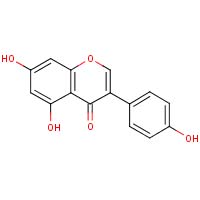 |
inhibitors
of phosphatidylinositol 3-kinase (PI3-K) and by genistein
an inhibitor of protein tyrosine kinase
acts
as an antioxidant, similar to many other isoflavones,
counteracting damaging effects of free radicals in tissues
antiangiogenic
effects (blocking formation of new blood vessels),
a
strong topoisomerase inhibitor
Due
to its structure similarity to 17�-estradiol, genistein
can compete with it and bind to estrogen receptors
|
Ongoing
Clinical Trial --Genistein
in Treating Patients With Prostate Cancer --completion
date 2014
Ongoing
Clinical Trial --Vitamin
D and Soy Supplements in Treating Patients With Recurrent
Prostate Cancer
Ongoing
Clinical Trial -
Isoflavones
|
| Curcumin |
Tumeric |
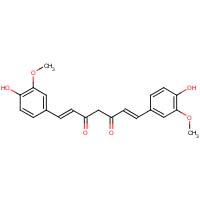 |
anti-inflammatory
properties
Curcumin
may synergizes with isoflavones to suppress PSA production
in prostate cells through the anti-androgen effects.
down-regulation
of AR (androgen receptor) and AR-related cofactors (AP-1,
NF-kappa-B and CBP).
|
Therapeutic
potential of curcumin in human prostate cancer. III. Curcumin
inhibits proliferation, induces apoptosis, and inhibits
angiogenesis of LNCaP prostate cancer cells in vivo.
Combined
inhibitory effects of soy isoflavones and curcumin on
the production of prostate-specific antigen.
Curry
And Cauliflower Could Halt Prostate Cancer
Combined
inhibitory effects of curcumin and phenethyl isothiocyanate
on the growth of human PC-3 prostate xenografts in immunodeficient
mice.
Curcumin,
a Dietary Component, Has Anticancer, Chemosensitization,
and Radiosensitization Effects by Down-regulating the
MDM2 Oncogene through the PI3K/mTOR/ETS2 Pathway
Ongoing
Clinical Trial --Curcumin
|
|
3,3'-diindolylmethane
(DIM)
--a
metabolite of I3C
|
Brassica
vegetables (cabbages, or as mustard family) such as broccoli,
cauliflower, and collard greens |
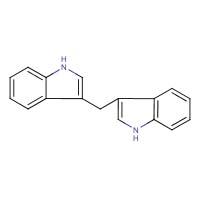 |
a
chemical which boosts DNA repair in cells and appears
to block the growth of cancer cells
Researchers
at the University of California at Berkeley have recently
discovered that 3,3'-Diindolylmethane in Brassica vegetables
is a potent modulator of the innate immune response system
with potent anti-viral, anti-bacterial and anti-cancer
activity. --
G1
arrest
|
ck
linus pauling institute
3,3'-Diindolylmethane
induces a G1 arrest in human prostate cancer cells irrespective
of androgen receptor and p53 status
Ongoing
Clinical Trial --Diindolylmethane
in Treating Patients With Stage I or Stage II Prostate
Cancer Undergoing Radical Prostatectomy
Ongoing
Clinical Trials Diindolylmethane
(DIM)
|
| Sulforaphane |
cruciferous
vegetables
Young
sprouts of broccoli and cauliflower
Broccoli,
|
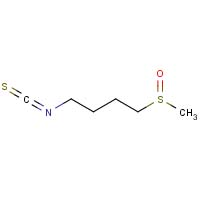 |
Sulforaphane
destabilizes the androgen receptor in prostate cancer
cells by inactivating histone deacetylase 6
Sulforaphane
activates the transcription factor NF-E2-related factor
2 (Nrf2), a member of the basic leucine zipper family,
which binds to and activates antioxidant-response elements
(AREs). Subsequently, activated AREs mediate the transcription
of antioxidant enzymes (particularly glutathione-S-transferase
and quinone oxidoreductase), resulting in the detoxification
of highly reactive carcinogens. AREs are cis-acting regulatory
enhancer elements found in the 5� flanking region of many
phase II detoxification enzymes.
|
Sulforaphane
destabilizes the androgen receptor in prostate cancer
cells by inactivating histone deacetylase 6
Sulforaphane
induces caspase-mediated apoptosis in cultured PC-3 human
prostate cancer cells and retards growth of PC-3 xenografts
in vivo
Clincial
Trials
The
Effects of Sulforaphane in Patients With Biochemical Recurrence
of Prostate Cancer
|
| indole-3-carbinol
(I3C) |
cabbage,
broccoli, cashews, soy beans, |
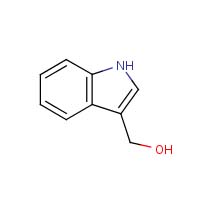 |
http://lpi.oregonstate.edu |
Indole-3-carbinol
mediated cell cycle arrest of LNCaP human prostate cancer
cells requires the induced production of activated p53
tumor suppressor protein.
Sloan
Kettering References
Clinical
Trials
Ongoing
Clinical Trial -Brassica
Vegetables or Indole-3-Carbinol in Treating Patients With
PSA Recurrence After Surgery for Prostate Cancer
Ongoing
Clinical Trial -The
Effects of Sulforaphane in Patients With Biochemical Recurrence
of Prostate Cancer
|
| Beta
Sitosterol |
phytosteol
found in avocado, pumpkin seeds, saw palmetto |
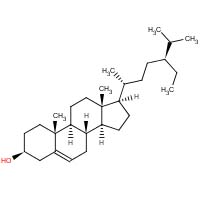 |
See
mechanisms of action from Linus
Pauling Insitute |
Beta-Sitosterol
and the Aging Prostate Gland, Dr Stephen B. Strum
and William Faloon, Life Extension, Fort Lauderdale,FL,
June 2005.
Ongoing
Clinical Trial -- The
Effect of Dietary Sitosterol on Blood Sugar and Cholesterol
|
|
Silibinin also known as silybin
Note:
isosilybin
B appears more active
|
Milk
Thistle |
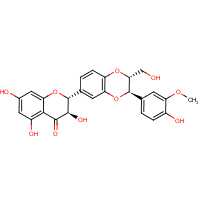 |
suppresses
the growth and runaway proliferation of human prostate
cancer cells
Note:
This compound intereferes with drug breakdown... ck which
cytochrome and drugs...
|
Prostate
cancer prevention by silibinin.
Silibinin
inhibits prostate cancer invasion, motility and migration
by suppressing vimentin and MMP-2 expression
The
Effect of High-Dose Silybin-Phytosome in Men With Prostate
Cancer --Clinical
Trial Completed
Inhibition
of telomerase activity and secretion of prostate specific
antigen by silibinin in prostate cancer cells
Antiproliferative
and apoptotic effects of silibinin in rat prostate cancer
cells.
|
| Capsaicin |
chili
peppers |
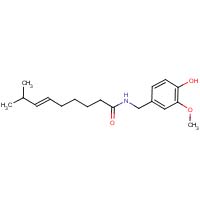 |
capsaicin
is able to kill prostate cancer as well as lung cancer
cells by causing them to undergo apoptosis
|
Phase
III placebo-controlled trial of capsaicin cream in the
management of surgical neuropathic pain in cancer patients.
Capsaicin
may slow PSA doubling time: case report and literature
review
Clinical
Trials
|
| Resveratrol |
polyphenol
and phytoalexin
grape
skins, red wine
|
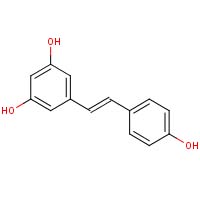 |
Multi-modes
of action |
Anti-cancer
effect of resveratrol is associated with induction of
apoptosis via a mitochondrial pathway alignment
Unique
Grape Skin Extract Inhibits Prostate Cancer Cell Growth
in the Laboratory
Ongoing
Clinical Trial -Resveratrol
for Improved Performance in the Elderly
Clinical
Trials
|
| Omega-3
fatty acid (linolenic acid) |
Fatty
fish and fish oil |
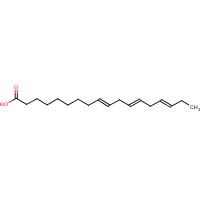 |
Reduces
inflammation
DHA
induces cell cycle arrest and apoptosis by activating
protein phosphatases, leading to dephosphorylation of
retinoblastoma protein (pRB). Protein phosphatases are
also involved with the protein Bcl2, which regulates the
release of cytochrome c from mitochondria, and eventually,
activation of the apoptotic enzyme caspase 3.
|
Omega
3-fatty acids: health benefits and cellular mechanisms
of action.
Dietary
Fish and Omega 3 Fatty Acids for Breast Cancer Prevention
Omega-3
fatty acids, fish oil, alpha-linolenic acid --Mayo Clinic
Fish
oil fights weight loss due to chemotherapy
Ongoing
Clinical Trial -- Fish
Oil
|
|
Apigenin |
plant
flavanoid found in herbs |
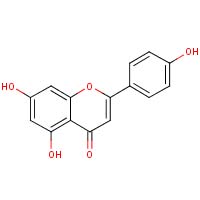 |
inactivates
Akt to trigger apoptosis in human prostate cancer |
Plant
flavonoid apigenin inactivates Akt to trigger apoptosis
in human prostate cancer: an in vitro and in vivo study
|
| ellagic
acid |
numerous
fruits and vegetables |
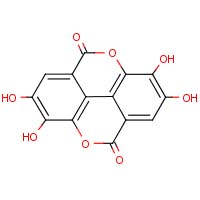 |
antioxidant
properties
antiproliferative
properties of ellagic acid are due to its ability to directly
inhibit the DNA binding of certain carcinogens, including
nitrosamines
|
Ellagic
acid and quercetin interact synergistically with resveratrol
in the induction of apoptosis and cause transient cell cycle
arrest in human leukemia cells. |
| Punicalagin
(ellagitannin compound) |
pomegranate
extract |
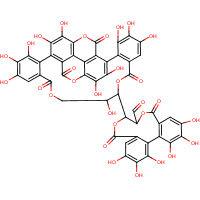 |
Antioxidant
properties
breakdown
to urolithins
|
Phase
II study of pomegranate juice for men with rising prostate-specific
antigen following surgery or radiation for prostate cancer.
Pomegranate
Juice References (MSKCC)
urolithins
inhibited the growth of human prostate cancer cells in
cell culture
|
|
isothiocyanates (ITCs
gluconasturtiin
|
watercress,
horseradish |
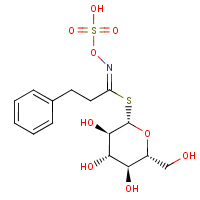 |
precursor
to ITC phenethyl isothiocyanate (PEITC).
reducing
DNA damage
resist
further DNA damage caused by free radicals
NOTE:
phenethyl isothiocyanates are formed when cruciferous
vegetables are cut, but stops when they are heated.
|
Chemoprevention
by Isothiocyanates
Effects
of phenylethyl isothiocyanate and its metabolite on cell-cycle
arrest and apoptosis in LNCaP human prostate cancer cells.
Differential
Response of Normal (PrEC) and Cancerous Human Prostate
Cells (PC-3) to Phenethyl Isothiocyanate-Mediated Changes
in Expression of Antioxidant Defense Genes.
Phenethyl
isothiocyanate inhibits STAT3 activation in prostate cancer
cells. 2009
|
| Vitamin
E |
walnuts
check
tocopherol and tocotrienol structures a,b.,..
|
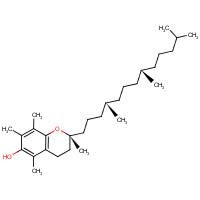 |
fat
soluble anti-oxidant that stops the production of ROS formed
when fat undergoes oxidation |
Vitamin
E Supplements in Preventing Cancer in Patients at Risk of
Prostate Cancer or Who Have Prostate Cancer |
| gamma-tocotrienol |
vegetable
oils, saw palmetto
Note:
tocotrienol tocopherols with unsaturated chain
|
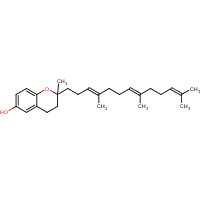
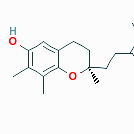 |
the
suppression of the NF-KB cell signaling pathway
decrease
in the expression of two cell proteins (PCNA and Ki67)
associated with cell proliferation
|
Gamma-Tocotrienol
Kills Prostate Cancer Stem Cells
New
Study shows that Gamma-Tocotrienol is the most Cardioprotective
Tocotrienol
gamma-Tocotrienol
Inhibits Pancreatic Tumors and Sensitizes Them to Gemcitabine
Treatment by Modulating the Inflammatory Microenvironment
Gamma-tocotrienol
inhibits nuclear factor-kappaB signaling pathway through
inhibition of receptor-interacting protein and TAK1 leading
to suppression of antiapoptotic gene products and potentiation
of apoptosis.
|
| Vitamin
C |
fresh
fruits and vegetables |
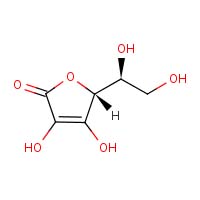 |
anti-oxidant
effect
remove
free radicals
to
destabilize a tumor's ability to grow under conditions
where there isn't enough oxygen to feed it.
|
HIF-Dependent
Antitumorigenic Effect of Antioxidants In Vivo |
|
Lentinan
(1,3 Beta-D-glucan)
Grifon
Pro D-fraction --
|
shitake,
Maitake mushrooms |
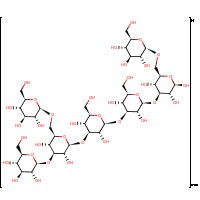 |
immune
system enhancer --
Lentinan's
active polysaccharide, 1,3 beta glucan, is not cytotoxic
but seems to enhance T-helper cell function and increase
stimulation of interleukin, interferon, and normal killer
cells
|
See
-- Sloan Kettering information |
|
Lycopene
|
tomatoes...
processed tomato paste
dried
fruits and vegetables
|
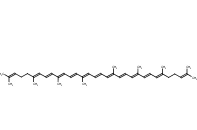
lycopene molecule
|
metal
chelating and antioxidant properties
antioxidant
activity, inhibition of cell cycle progression, induction
of apoptosis, increase of gap-junctional cell communication,
inhibition of insulin-like growth factor I signal transduction,
inhibition of androgen activation and signaling,
|
Tomato
Ingredient May Offer Prostate Protection
Interaction
of Tomato Lycopene and Ketosamine against Rat Prostate
Tumorigenesis
|
| Soyasaponin
1 |
soybeans |
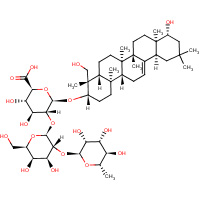 |
inhibition
of the Akt signaling pathway and enhanced activity of ERK1/2 |
Soyasaponin
I Attenuates TNBS-Induced Colitis in Mice by Inhibiting
NF-kappaB Pathway
Inhibition
of Akt signaling and enhanced ERK1/2 activity are involved
in induction of macroautophagy by triterpenoid B-group
soyasaponins in colon cancer cells.
Soyasaponin
I decreases the expression of a2,3-linked sialic acid
on the cell surface and suppresses the metastatic potential
of B16F10 melanoma cells
|
| Nitrate |
Beet
Roots (also carrots --root vegetables) |
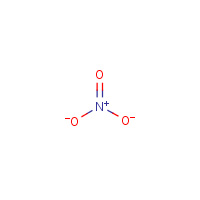 |
Note:The
Beet plant root has the largest quantity of nitrates amongst
the vegetables consumed by humans
|
Beet
Juice Lowers Blood Pressure
Acute
effect of a high nitrate diet on brain perfusion in older
adults
Viagra
and Nitrates Don't Mix
|
Betacyanin
(betalains) |
beets |
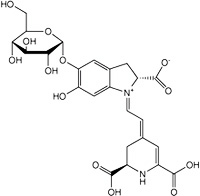 |
COX-1
and COX-2 inhibition |
Relative
Inhibition of Lipid Peroxidation, Cyclooxygenase Enzymes,
and Human Tumor Cell Proliferation by Natural Food Colors
Phenolic
composition, antioxidant capacity and in vitro cancer
cell cytotoxicity of nine prickly pear (Opuntia spp.)
juices.
|
| Fisetin |
Strawberries |
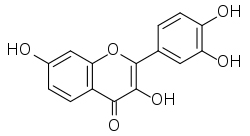 |
Researchers
observed that blood and brain levels of sugars affixed to
proteins known as advanced glycation end-products-or AGEs-were
reduced in fisetin-treated compared to untreated Akita mice.
These decreases were accompanied by increased activity of
the enzyme glyoxalase 1, which promotes removal of toxic
AGE precursors. |
Flavonoids
could represent 2-fisted assault on diabetes and nervous
system disorders |
































